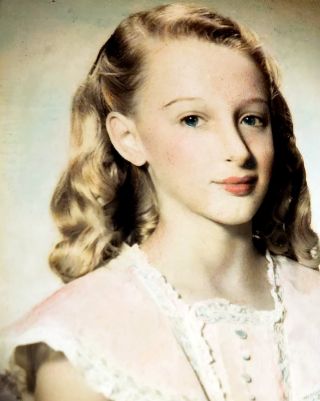Resilience
Bringing Resilience and Hope to Young People Today
A Personal Perspective: One caring adult can make a major difference to a child.
Posted March 17, 2023 Reviewed by Ekua Hagan

Children today are often confused about who they are and what they can become. They don’t need more information. Information comes at them from all directions—from parents, peers, teachers, and ever-present social media. They need something more. Research from the Centers for Disease Control (CDC) has shown that young people are suffering from record levels of depression and hopelessness and one in three teenage girls has considered suicide (CDC, 2023).
What young people need today is hope. Research has revealed that it only takes one caring adult to make a difference in how young people see themselves and their future. Researchers Emmy Werner and Ruth Smith’s classic longitudinal study has shown that knowing one supportive adult enables at-risk youth to overcome negative circumstances and lead successful, meaningful lives.
For over three decades, Werner and Smith studied the lives of over 500 young people on the Hawaiian island of Kauai. Many came from dysfunctional families, compromised by chronic poverty and unstable home environments with divorce, discord, abuse, alcoholism, and mental illness. Yet some managed to flourish because of one caring adult in their lives—an aunt, uncle, grandparent, teacher, minister, coach, or neighbor who saw them, encouraged them, and helped them see beyond current circumstances to believe in themselves and their future (Werner, 1992; Werner & Smith, 1992).
I’m grateful for that one caring adult in my own life. My father was an Air Force colonel, so we moved around a lot. As a very confused 12-year-old, I attended four different schools in the seventh grade. In September, I began seventh grade in Grandview, Missouri, then moved for my father’s three-month assignment to a base in Florida, where my seventh-grade class was part of a high school. In January, we moved to Nebraska for his new assignment as commander of a radar site near Omaha.
In Missouri, I was a normal student. In Florida, we took proficiency tests, and the principal called my mother into his office to tell her that I had tested at the 12th-grade level in all subjects but math. If I took math in summer school, he said, I could begin college that fall. My mother laughed when she told us this at dinner, seeing me as only a shy, unpromising 12-year-old girl.
In Nebraska, my father enrolled my brother and me in a parochial school. Along with the other children on the base, we were driven to school in Omaha by an airman in a blue Air Force staff car. My new teacher was a formidable nun in a long black habit with a strong sense of discipline. When students whispered to each other or passed notes, Sister Mary Rose would throw a book at them. And if one student misbehaved, she kept the whole class an hour after school. When I raised my hand to ask questions, she saw this as disrespectful and hissed in my ear that “nice little Catholic girls” don’t behave like delinquents. Our class routinely stayed after school and the Air Force staff car waited, parked an hour in the snow. After two weeks, my father withdrew my brother and me from that school.
The next week, I entered Mrs. Striker’s seventh-grade class at MacMillan Junior High School. When I raised my hand to ask questions, my new teacher saw me as an enthusiastic student. We learned social studies by giving news report panels, reporting on a country we were studying.
Mrs. Striker ate lunch with us in the school cafeteria, asked us about our lives, listened, and encouraged us. She was the first adult who really saw me.
That year had been confusing. In Florida, the principal thought I was a genius but my mother ridiculed me. In the Catholic school, I was a juvenile delinquent. But Mrs. Striker saw me as a bright student who loved learning and helped me believe in myself. Years later, I also became a teacher, wanting to pass on to others the gift Mrs. Striker had given me.
We all need a supportive community, mentors, and friends who encourage us and help us believe in ourselves (Fredrickson, 2013). In fact, a “nourishing network” is one of the five key components of hope (Goetzke, 2022) And young people today desperately need hope.
Questions to consider
As research has shown, it only takes one caring adult to help a young person develop resilience.
Can you think of someone who brought hope to your life, the first adult who really saw you? Was this a teacher, coach, aunt or uncle, a helpful neighbor, scout leader, or someone else?
How can you be that one caring adult for a young person in your life today?
This post is for informational purposes and should not substitute for psychotherapy with a qualified professional.
© Diane Dreher, Ph.D. 2023 All rights reserved.
References
Centers for Disease Control and Prevention. (2023, February13). U.S. teen girls experiencing increased sadness and violence. Centers for Disease Control and Prevention. CDC Newsroom. https://www.cdc.gov/media/releases/2023/p0213-yrbs.html
Fredrickson, B. (2013). Love 2.0: How our supreme emotion affects everything we feel, think, do, and become. New York, NY: Hudson Street Press.
Goetzke, K. (2022). The biggest little book about hope. (2nd edition). New York, NY: Morgan James Publishing. For more about her work, see https://kathryngoetzke.com/
Werner, E. E. (1992). Risk, resilience, and recovery: Perspectives from the Kauai Longitudinal Study. Development and Psychopathology, 5, 503-515.
Werner, E. E. & Smith, R. S. (1992). Overcoming the odds; High risk children from birth to adulthood. Ithaca, NY: Cornell University Press.




